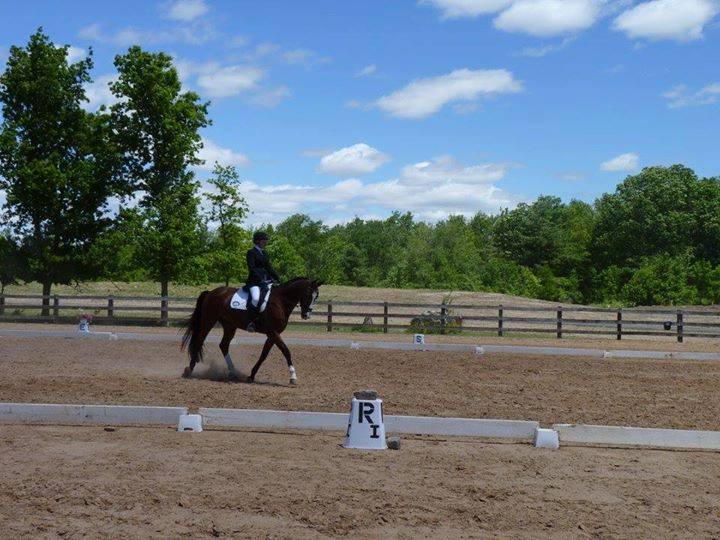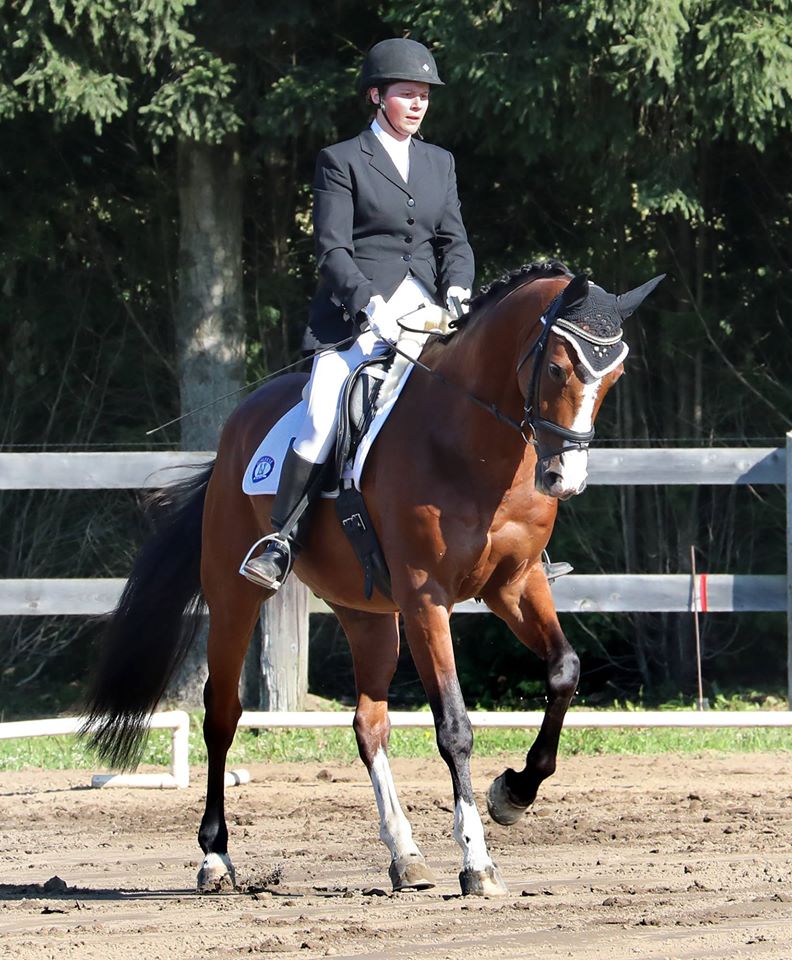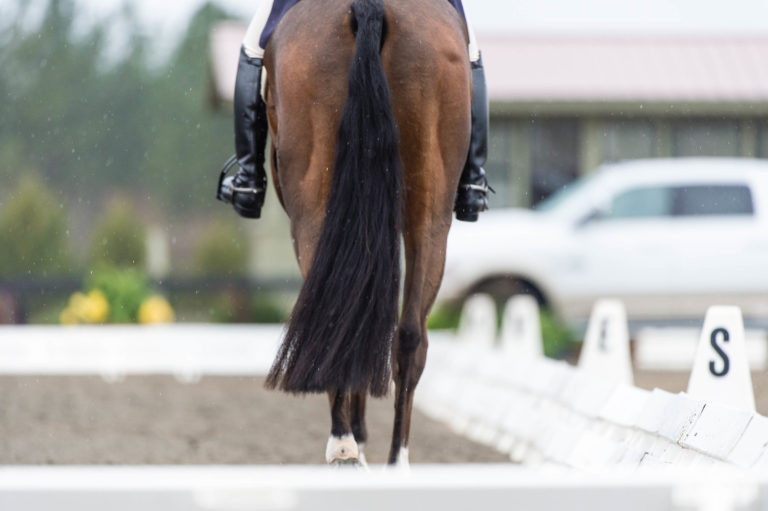Amanda Peer submitted Photo A a year ago, which I critiqued in the August 2017 issue of Dressage Today. At the time, she and her horse, Caliente, were preparing to move up to Second Level. Since then, they have successfully competed through Second Level and Amanda has submitted a more recent photo in order to evaluate her progress.


Studying the difference in the two pictures, I can only congratulate Amanda and Caliente on their development in Photo B. Caliente appears to have grown! His neck and chest have clearly developed and even though the angle does not allow full view of his back, the croup appears well muscled and round. The movement has changed, too. I can see that his hind legs move more purposefully—with less dust and more lift—and the shoulders are carried better.
In my critique of the earlier photo (Photo A), I commented that Amanda’s basically correct seat was a bit passive and she needed to become more active and part of the horse’s movement in order to move up to Second Level. In the more recent photo, I can see that she has accomplished this.
Amanda’s seat now looks deeper and more connected. She looks like she is supporting Caliente in his work. I will mention that her lower leg is a bit turned out and her hands could be carried more freely, but the overall impression of more connection and higher-quality movement is what strikes me most when I compare these two pictures. Amanda’s homework was well done. But as my own trainer tells me: “This looks good—now try to make it better!”
In order to offer insight for further development, let’s study the similarities between the two pictures. Even though Caliente’s muscles in his topline have developed well, he is, again, slightly behind the vertical and should carry his neck and head better. Especially in this phase of the canter (the landing stride) the poll needs to be the highest point and the nose should be reaching forward.
I can see that Amanda is concentrating on performing well. She is aiming to really keep the horse together, to create more engine from behind and to help him in a more collected balance. But she needs to be very careful that in this effort she does not close the horse’s frame in the front. Her very slight habit of looking down gives her seat and Caliente a downhill focus. Amanda should try to look up proudly over her horse’s ears. This alone can make a difference and give the canter a more uphill focus and direction.
Another tip I would give to Amanda is in regard to the timing of her hands in connection to an upright balance in her body in canter. In an ideal canter, the horse has a round jump. Imagine that horse and rider are like two balls that are stacked on top of each other. When the bottom ball starts rolling forward, the ball on top needs to roll in the opposite direction to be able to stay in balance on top. This is a very important image, because many riders roll their seat and hands in the same direction as the horse. This consequently leads to heaviness in the movement and a more downhill canter. To encourage self-carriage and uphill quality within the stride, Amanda should stretch up with her body and push her hands forward and up during the landing phase of the canter. With more “forward” and “up” thinking in her own body, it will be easier for her to correct her leg position and have her horse more in front of her leg, too.
When the horse has jumped off the ground in canter and is in the moment of suspension, it is already determined where the horse will land. At this point, if the rider interferes with the landing, she can only disturb the horse’s balance. In canter, the rider cannot change anything after take-off, but she can give the next stride a better direction. That means when riding the canter, you must always think futuristically. You must work for the next stride and stay out of the horse’s way in the landing. For example, looking down slightly is focusing on the landing, but if you look ahead to where the next stride should be, you are automatically changing the timing of the aids.
To check that you are sitting with independent hands, remember that you must be able to feel the exact same contact in both reins during take-off and landing. In this picture, it looks like Caliente is jumping a bit into the rein during landing and then, to avoid the stronger contact during landing, he lowers his head and brings his nose more behind the vertical. If you were to watch this in a video, you would see that it leads to a slight up-and-down nodding of the horse’s head in canter. I call these horses the “Yes-Sayers.” This nodding motion implies that the horse is not fully balanced from behind.
I can see that Caliente’s topline and neck muscles have already improved a lot within the span of a year and I imagine that he will continue to improve. However, in situations such as riding a dressage test, old habits often become visible again.
As I look at this new picture, I would now tell Amanda to trust her horse. She should seek further improvement by pushing her hands and her horse’s neck more forward to achieve a more uphill frame. Her scores will improve with this.
Amanda should be proud of her development and should reflect this in her own posture, too. Then her upper body will open up and she and Caliente can shine with more power and harmony.
Susanne von Dietze is a leader in equestrian biomechanics. A physiotherapist, licensed Trainer A instructor and judge for dressage and show jumping, she gives lectures and seminars throughout the world, including at the prestigious German Riding Academy in Warendorf. She is a native of Germany and now lives with her husband and three children in Israel, where she competes at the international level. She is the author of two books on the biomechanics of riding: Balance in Movement and Rider and Horse, Back to Back. Find her books at www.EquineNetworkStore.com.
This article first appeared in the September 2018 issue of Dressage Today.











